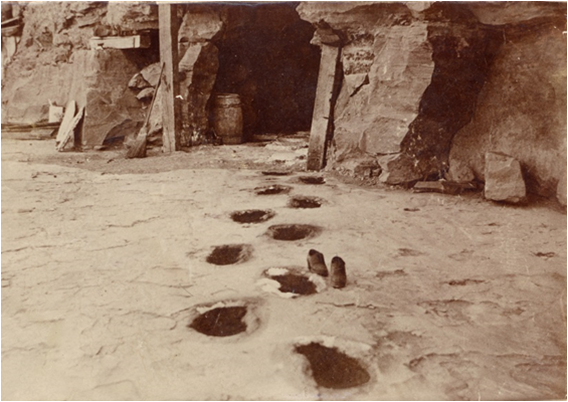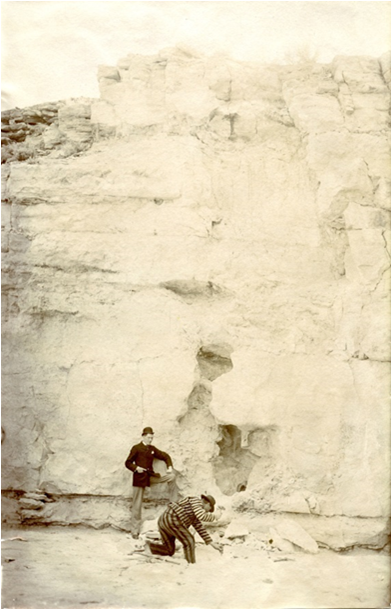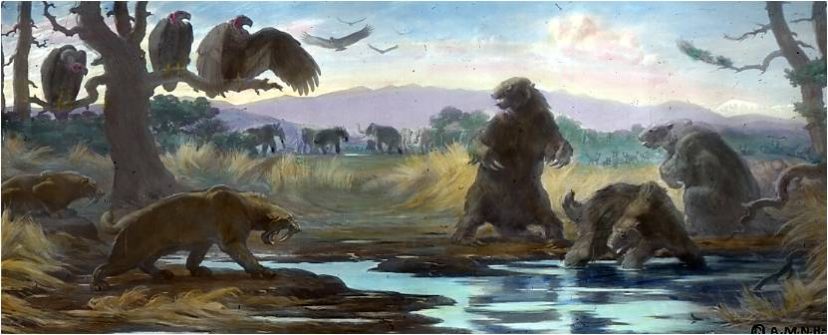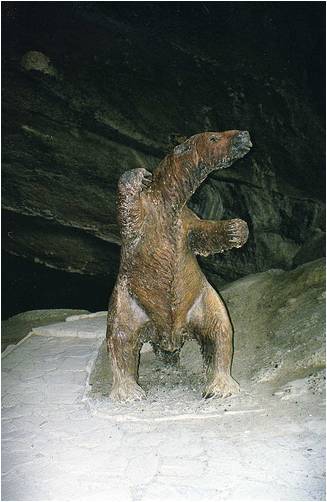Fossils
The sandstone quarry at the Nevada State Prison was a busy place in the late 1870’s as the demand for sandstone building blocks was increasing. As layer after layer of sandstone was cut from the quarry, a wealth of fossils and fossilized tracks were revealed, including bison, mammoth, horse, deer, and wolf. At a layer near the current floor of the quarry, an amazing discovery took place: the tracks of a species whose footprints, at first glance, appeared to be those of a giant human.
Measuring 18-21 inches in length and 8-9 inches wide, the foot prints were brought to the attention of a scientist at the California Academy of Sciences in San Francisco who declared that they belonged to a race of giant humans from the late Pliocene era. Their age would be approximately 2 million years old. The scientist explained the lack of human foot contours by suggesting that the person might have worn sandals.
Other scientists reviewed the evidence and concluded the fossilized prints were those of a giant sloth who lived about 1.6 million years ago. This species was bi-pedal part of the time, which would account for the similarities with hominids.
While the scientific evidence was overwhelmingly in favor of the giant sloth explanation, those who believed in the giant human theory persisted well into the turn of the century. Papers representing both sides were written and debated. The footprints were exhibited at the Columbian Exposition, Chicago World’s Fair, in 1893.





